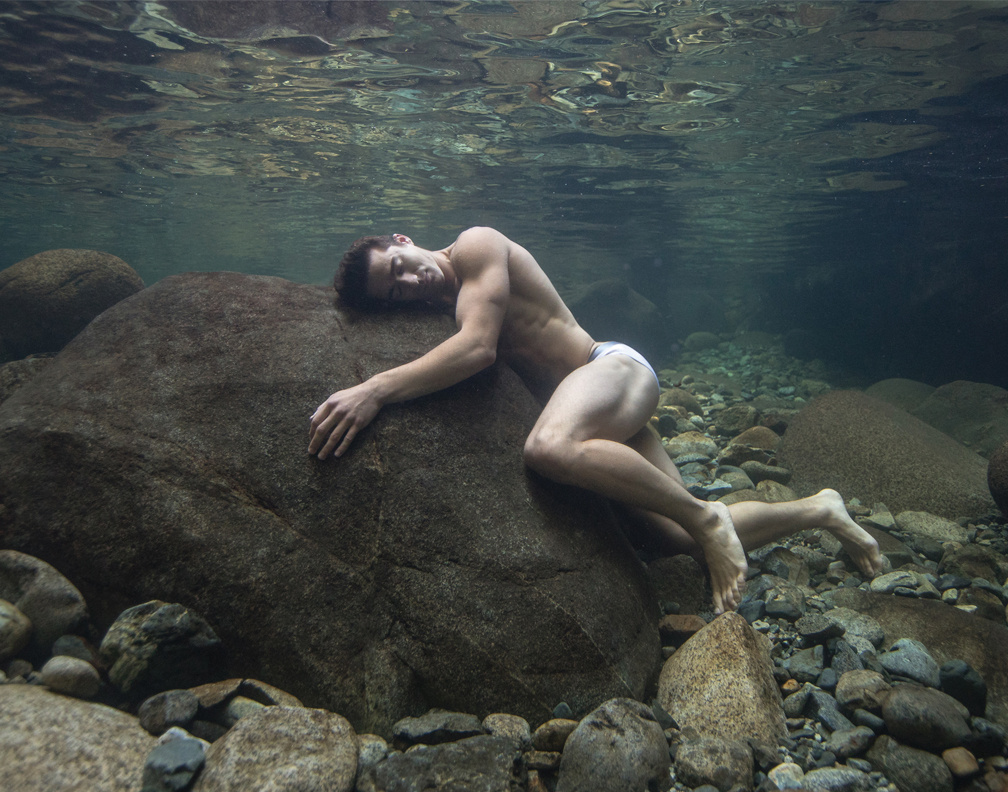
Exhibition
Progeny: New Visions of The Classical Form
featuring Lucas Murnaghan, Steven Menendez, Walter Jenkel, Phil Dlab, and Gabriel Goldberg
November 7 - February 22, 2025
Opening Reception:
November 7, 2024
6 - 8 PM PST
Main Gallery
Free to Members and the Public
This group exhibition features five contemporary photographers—Lucas Murnaghan, Steven Menendez, Walter Jenkel, Phil Dlab, and Gabriel Goldberg—whose work is inspired by the iconic physique photographer Bob Mizer. Each artist reinterprets Mizer's legacy, showcasing new visions of the male form through a range of styles. From Murnaghan’s ethereal underwater scenes to Goldberg’s hyper-saturated studio portraits, the exhibition highlights how Mizer's pioneering work with masculinity and the body continues to resonate. Progeny celebrates the lasting impact of Mizer’s vision, blending timeless influences with modern aesthetics in bold and creative ways.
Progeny: New Visions of The Classical Form brings together the work of five contemporary photographers—Lucas Murnaghan, Steven Menendez, Walter Jenkel, Phil Dlab, and Gabriel Goldberg—each of whom draws inspiration from the legendary physique photographer, Bob Mizer. This group exhibition showcases a diverse range of visual interpretations, each informed by Mizer's iconic style, demonstrating how his pioneering work continues to echo in modern photography.
Bob Mizer, widely known for his daring portrayals of the male form, used his lens to create images that went beyond mere documentation of the body. Mizer transformed his subjects into symbols of strength, grace, and sensuality. His work celebrated masculinity in ways that challenged societal norms and expanded the boundaries of art photography. Decades later, the spirit of Mizer’s innovative approach endures, influencing a new generation of artists who explore the body in similarly bold and imaginative ways.
Each of the five artists in Progeny has taken up the challenge to reflect on Mizer's legacy, infusing it with their unique artistic voices and modern sensibilities.
Lucas Murnaghan's work, for instance, immerses viewers in the fluidity of water, offering ethereal underwater scenes where the human form dances with nature. Murnaghan’s subjects seem to float in time and space, as if inhabiting a dreamscape—a poetic extension of Mizer’s own fascination with capturing movement and freedom. His imagery invites contemplation of the body’s relationship with water, reminiscent of Mizer’s interest in fluid, natural forms.
In contrast, Steven Menendez presents a series of stark, black-and-white portraits that strip the image of distraction, focusing on the raw beauty of the human physique. His work, much like Mizer's, centers on simplicity and clarity, allowing the viewer to appreciate the sculptural qualities of his subjects. Through sharp contrasts of light and shadow, Menendez emphasizes the strength and vulnerability of the body, echoing the timelessness of Mizer’s black-and-white compositions.
Phil Dlab’s playful color photography presents a joyful, almost whimsical take on the nude form. His models, joyously disrobed and at ease in natural settings, seem to commune with their surroundings in a celebration of freedom and self-expression. Dlab’s approach shares a kinship with Mizer's playful use of outdoor settings, reflecting the photographer’s sense of liberation and creativity that was often present in his work.
Similarly, Walter Jenkel’s photography incorporates everyday objects and animals, echoing Mizer’s resourcefulness in using whatever props he could find to animate his studio sessions. Jenkel's subjects engage with these elements, creating a dynamic interplay between the human body and its environment. This sense of improvisation and spontaneity in his work draws a direct line back to Mizer's innovative use of props to frame and enhance his subjects.
Gabriel Goldberg's studio work rounds out the exhibition with hyper-saturated images of muscular figures, rendered in vivid color. These portraits are a direct nod to Mizer's own studio photography, where bold, vibrant tones accentuated the beauty and strength of the human form. Goldberg’s images, though distinctly modern in their aesthetic, carry the same reverence for the body as Mizer’s work, capturing moments of intensity and grace that transcend time.
Although none of these photographers ever met Bob Mizer, his influence is evident in their work. Each artist has found inspiration in his bold explorations of masculinity, sensuality, and the physical form, channeling his legacy into new and exciting directions. Together, the works in Progeny serve as a testament to Mizer's lasting impact on the world of photography. His ability to inspire artists from different eras and backgrounds speaks to the enduring power of his vision.
As you move through this exhibition, consider how the legacy of Bob Mizer reverberates through these contemporary interpretations, highlighting both the continuity and evolution of the classic form in art. Progeny celebrates the lasting influence of an artist who helped shape the visual language of the human body, leaving an indelible mark on the generations that follow.
Five showcases of contemporary photographers who reinterpret the iconic work of Bob Mizer, blending his legacy of celebrating masculinity and the body with bold, modern perspectives.
Bob Mizer Foundation